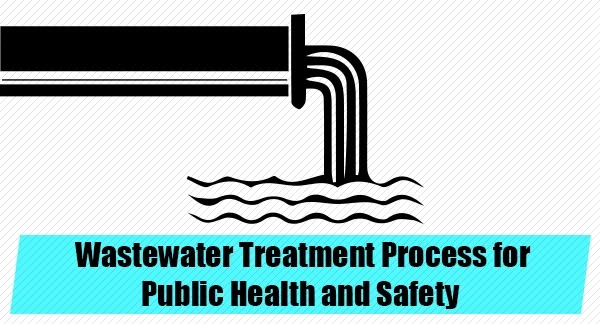Professional engineers who work with water resources are mainly concerned about water pollution due to the discharge of wastewater. To help prevent water pollution, the wastewater discharged from households and industries is treated. It is extremely important for environmental engineers preparing for their PE exam to understand the wastewater treatment process.

The process of wastewater treatment consists of the following steps:
The pre-treatment process occurs prior to the discharge of wastewater into the treatment plant. It prevents the toxic chemicals or excess nutrients from being discharged into the wastewater. In this treatment method, water discharged from homes, commercial places, and industries enters the sanitary sewers, and water from rainwater enters the storm water sewers. The combined sewer system carries both sanitary waste and the storm water. In the pre-treatment method, the water moves toward the wastewater plant primarily by gravity flow. Therefore, it prevents sediment and suspended material.
Preliminary Treatment Step
In this treatment method, wastewater treatment is done by using bar screens and grit chambers, which remove large objects and nondegradable materials.
- Bar Screen
The bar screen prevents large particles that have the entered sewer system from continuing in the flow of treatment. Such objects include bottles, pieces of wood, and any solid materials.
 |
| Bar Screen |
- Grit Chamber
The grit chamber is a narrow tank that is designed to slow down the flow of the wastewater, so that solids, such as sand, will settle out of the water. Grit causes excessive wear and tear on pumps and other plant equipment, and therefore, it is recommended to remove grit periodically from the collection trap.
 |
| Grit Chamber |
- Mesh Screen Method
Mesh screens collect diapers, towels, and plastic material. The size of a mesh screen varies and is optimized to remove solids. If the solids are not removed, then they enter the pipes of the treatment plant and cause damage and inefficiency to the process.
 |
| Mesh Screen |
The above methods are thoroughly discussed in principles and practice of engineering (PE) exam review courses for environmental engineers and water resources engineers.
Primary Treatment of Wastewater
The sewage water enters the plant for treatment and first flows through a screen for removing large floating materials. Large materials may clog pipes or damage treatment equipment. The water passes through the grit chamber where cinders, sand, and small stones settle at the bottom.
The grit chamber is mostly used in plants having combined sewer systems where sand or gravel may wash into sewers along with storm water. The flow meter continuously records the volume of water entering the treatment plant. Biochemical oxygen demand (BOD) is a measure of the amount of oxygen required to aerobically decompose organic matter in the water.
In this physical process, the wastewater flow is slowed down and allows suspended solids to settle at the bottom of the sedimentation tank. The suspended solids that settle at the bottom are called sludge or bio solids.

The sludge from the primary sedimentation tanks is pumped into the sludge thickener. The primary treatment tank water is pumped to the trickling filter for secondary treatment.
Secondary Treatment of Wastewater
This process utilizes the bacteria and algae to metabolize organic matter in the wastewater. It removes about 85% of the organic matter in the sewage by use of bacteria. The secondary treatment involves activation of sludge and a filtering process.
The effluent leaves the sedimentation tank and then flows or is pumped to the trickling filter. A trickling filter is a bed of stones from three to six feet deep through which primary treated water passes.

The sludge process rapidly speeds up the work of the bacteria by combining air and sludge with bacteria. After the sewage leaves the settling tank in the primary stage, it is pumped into an aeration tank. It is then further mixed with air and sludge loaded with bacteria and is left to set for several hours to break down the organic matter into harmless byproducts. The sludge is now activated with billions of additional bacteria and other tiny organisms. They can be used again by returning the bacteria to the aeration tank to be mixed with air and new sewage. To complete secondary treatment, the effluent from the sedimentation tank is then disinfected with chlorine before being discharged into receiving waters. Chlorination will kill more than 99 percent of the harmful bacteria in the effluent. Many states now require the removal of excess chlorine before discharging to surface waters by a process called dechlorination. Most of the above topics are covered in undergraduate environmental engineering courses. Wastewater treatment is an important exam topic for the PE Exam, so it is recommended to review the topic before taking the exam.
No comments :
Post a Comment